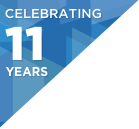Conference:March 6-8, 2017
Workshops:March 9-10, 2017
Presentation: Consensual Software: Prioritizing Trust & Safety
Location:
- St James, 4th flr.
Duration
Day of week:
- Tuesday
Level:
- Intermediate
Persona:
- Developer
Key Takeaways
- Understand how to build trust and safety into the product as part of the product ideation phase
- Leave with a checklist with things to think about when you are creating a product or feature
- Learn what you can do to make consensual software reality
Abstract
Online safety has become a huge problem in the world of oversharing. Real name policies, automatic geolocation tracking, and photo tagging increase user adoption rates, but these features can be quickly abused by bad actors. This talk will discuss how to apply a "consent filter" to product decisions to make a safer user experience and to help protect your most vulnerable users from harm.
Interview
Trust and safety is about keeping users safe. Online harassment is unfortunately a reality. When you are part of a community and online space you should be able to connect with one another and work together safe and be productive. My team at Github builds community management tools and features to discourage destructive behavior.
I will focus on how to build trust and safety into the product as part of the product ideation phase and features as opposed to it being an afterthought. There can be features who are well meaning but can be used as vectors of harassment or abuse. I will explore how you can ask questions ahead of time and help people become more aware to prevent things becoming a PR problem, support problem, or engineering problem.
I’m talking mainly to developers and product managers, as ideally this is a thing that is discussed before the problem happens. Abuse reports are often low number but abuse is incredibly toxic, it can poison the content on a site and people don’t want to be harassed. Just because it’s a low volume doesn’t mean it’s not important.
We create a checklist with things to think about when you are creating a product or feature. For example, when you have a direct messaging feature the checklist helps you to go through the thinking process before developing it.
It’s a very new topic and I want to reach out to large audience, so it will be beginners level.
Consensual software is about making sure that everybody involved is aware and gives explicit consent that they want to interact. Developers can use the checklist that I mentioned before when defining the needed functionality. Another thing they can think about is audits logs, as these will help to know what happened and when and who did it. One last thing is minimising abuse vectors by limiting the features for 0-day accounts. If you have high risk features then people should not be able to use them directly after creating an account.
Similar Talks





Tracks
-
Architecting for Failure
Building fault tolerate systems that are truly resilient
-
Architectures You've Always Wondered about
QCon classic track. You know the names. Hear their lessons and challenges.
-
Modern Distributed Architectures
Migrating, deploying, and realizing modern cloud architecture.
-
Fast & Furious: Ad Serving, Finance, & Performance
Learn some of the tips and technicals of high speed, low latency systems in Ad Serving and Finance
-
Java - Performance, Patterns and Predictions
Skills embracing the evolution of Java (multi-core, cloud, modularity) and reenforcing core platform fundamentals (performance, concurrency, ubiquity).
-
Performance Mythbusting
Performance myths that need busting and the tools & techniques to get there
-
Dark Code: The Legacy/Tech Debt Dilemma
How do you evolve your code and modernize your architecture when you're stuck with part legacy code and technical debt? Lessons from the trenches.
-
Modern Learning Systems
Real world use of the latest machine learning technologies in production environments
-
Practical Cryptography & Blockchains: Beyond the Hype
Looking past the hype of blockchain technologies, alternate title: Weaselfree Cryptography & Blockchain
-
Applied JavaScript - Atomic Applications and APIs
Angular, React, Electron, Node: The hottest trends and techniques in the JavaScript space
-
Containers - State Of The Art
What is the state of the art, what's next, & other interesting questions on containers.
-
Observability Done Right: Automating Insight & Software Telemetry
Tools, practices, and methods to know what your system is doing
-
Data Engineering : Where the Rubber meets the Road in Data Science
Science does not imply engineering. Engineering tools and techniques for Data Scientists
-
Modern CS in the Real World
Applied, practical, & real-world dive into industry adoption of modern CS ideas
-
Workhorse Languages, Not Called Java
Workhorse languages not called Java.
-
Security: Lessons Learned From Being Pwned
How Attackers Think. Penetration testing techniques, exploits, toolsets, and skills of software hackers
-
Engineering Culture @{{cool_company}}
Culture, Organization Structure, Modern Agile War Stories
-
Softskills: Essential Skills for Developers
Skills for the developer in the workplace








